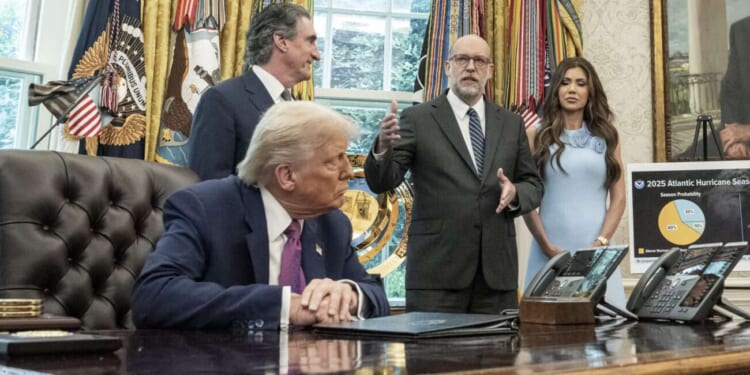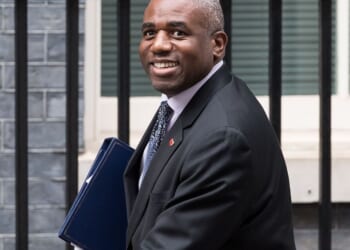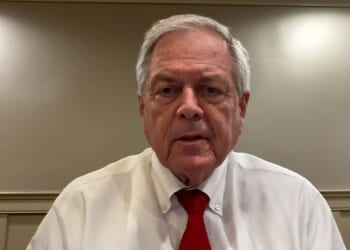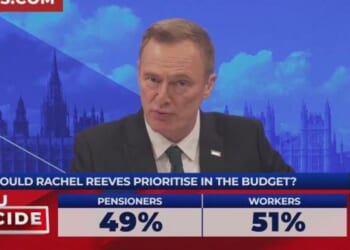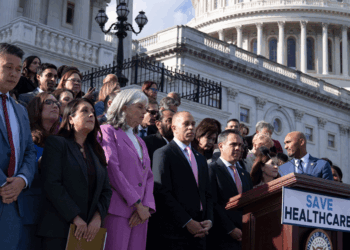It’s day 10 of the government shutdown, and the Trump administration is finally starting to make good on its plans to permanently lay off federal workers.
“RIFs have begun,” Office of Management and Budget (OMB) Director Russell Vought wrote in a X post on Friday, using the acronym for “reductions for force”—the technical jargon for government layoffs.
The RIFs have begun.
— Russ Vought (@russvought) October 10, 2025
The administration has offered no details on the layoffs, beyond the OMB’s comment to Semafor that they will be “substantial.”
Any permanent firings of government workers during a shutdown would also be unusual. Typically, federal workers are temporarily furloughed when Congress fails to agree on appropriations bills to keep the government open, and then given back pay once funding resumes.
In September, as Politico first reported, Vought circulated a memo to government agencies instructing them to prepare more permanent “reduction in force” plans should a shutdown occur.
In the event of a shutdown, agencies were told to eliminate employees working on “programs, projects, or activities” whose funding had lapsed during the shutdown, and which were not “consistent with the President’s priorities.”
Once funding resumes, Vought’s memo instructed agencies to “revise their RIFs as needed to retain the minimal number of employees necessary to carry out statutory functions.”
In short, the Trump administration is hoping to use the shutdown to permanently reduce the size of the federal bureaucracy, with an immediate focus on eliminating employees who might be working on programs that conflict with President Donald Trump’s agenda.
This is just the latest example of the Trump White House arm-twisting Democrats during the shutdown. Last week, federal departments announced they’d be pausing the release of funds for transportation and energy projects in Democratic states.
Whether the president has the legal power to unilaterally fire employees en masse during the shutdown is controversial.
Vought asserted in his RIF memo that since funding has lapsed for discretionary programs, there’s no statutory requirement that they be carried out. Staff dedicated to those programs can therefore be let go at the executive branch’s discretion.
In a lawsuit filed at the beginning of the shutdown, the major public sector unions rejected this argument. They asserted that a temporary lapse in funding for a program does not mean the legal authorization for the program has lapsed.
Additionally, they argued that since federal law prohibits the executive branch from devoting resources to activities for which there’s no funding, the Trump administration can’t devote resources to firing employees during the shutdown.
In short, this is yet another battle in the constant war Trump and Vought have been fighting with government employees, their union representatives, and liberal litigants more generally, over the extent of the president’s power over executive branch employees.
Vought has consistently asserted that the president has effectively unlimited authority to hire and fire at will. Laws to the contrary are unconstitutional and can more or less be ignored.
His critics argue that Congress has substantial power to shape and regulate the federal bureaucracy, including on matters of personnel, and that creates significant legal limits on the president’s personnel decisions.
Government unions are already preparing to challenge the shutdown layoffs. The AFL-CIO, which already sued over Vought’s initial memo, intimated on X that they’d sue to challenge the actual layoffs as well.
America’s unions will see you in court. https://t.co/mowwgTvzKZ
— AFL-CIO ✊ (@AFLCIO) October 10, 2025
Reducing federal headcount has been one of the few areas where the Trump administration’s government-slashing efforts have produced significant results.
Trump took over a federal bureaucracy numbering some 2.4 million civilian federal employees in January. Between firings, retirements, and the administration’s deferred resignation program, it’s estimated that there are 201,000 fewer federal workers as of September 23.
The layoffs Vought announced Friday would be in addition to that figure.
The Trump administration has said it plans to end the year down some 300,000 employees, which would amount to a 12 percent cut in the federal workforce. Depending on how many workers are let go during the shutdown and whether their firings are allowed to stand, the federal workforce could end up being even smaller still come 2026.
That’d be much to the good. The federal government does too many things. By definition, it employs too many people as well.
A smaller federal workforce equates to a smaller government. Workers who leave non-productive federal employment for productive private sector work enrich the entire economy.
To be sure, there’s only so much firing federal workers can achieve in the pursuit of a leaner state. Reducing federal headcount doesn’t by itself eliminate federal laws, regulations, or programs.
It also has a relatively marginal impact on the cost of government, given that the vast majority of government spending is not going toward civil servants’ pay and benefits.
Still, most shutdowns end with no real change to the size or scope of the federal government. Eventually, appropriations are passed, spending resumes, and government employees go back to work.
This time, if the Trump administration’s shutdown layoffs are allowed to stand, the government that reopens will be smaller than the one that closed down.

